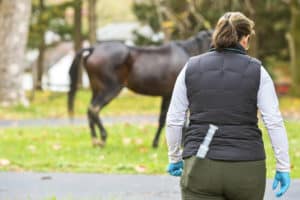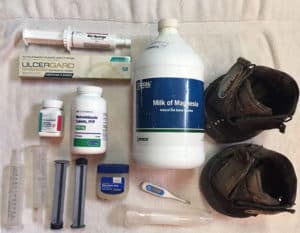Rabies: Scary, But Very Preventable
- Topics: Horse Sense (and Sensibility)
Every few years I hear a story or receive an email about veterinarians handling a horse with rabies. These accounts are rare, but they’re usually disturbing–sometimes because the animal becomes very dangerous (” furious rabies”), and other times because the case masquerades as another illness and confirmation of rabies comes as a surprise at necropsy (this is the more common form in livestock, also called “dumb rabies”).
The take-home that I get from every single story is that horse owners and veterinarians should be on alert for certain–and sometimes bizarreÑclinical signs; they should be careful about how they manage horses with these signs; and (most importantly) owners should have their horses vaccinated to prevent contracting rabies in the first place.
The case I heard about recently was a 16-year-old stud pony that was acting erratic and biting at a wound on his chest, which concerned the owners. The veterinarian explained to me she thought there might be something caught in this pony’s chest wound that was making him very uncomfortable. The vet told me, “He was so agitated the ownerÑan adult maleÑhad trouble holding him. Looking back, that level of agitation and wanting to get his mouth on something should have alerted me. There’s always the excuse not to think of rabies, but looking back, that’s a signal I could’ve been more attuned to.”
Attempts to alleviate the pony’s apparent discomfort (with painkillers) and keep him from injuring himself further and allow the wounds to heal (converting an old plastic bucket into a bib to keep him from accessing his chest) failed, and the horse’s aggressiveness worsened. In the days following the initial vet visit, the pony eventually attacked the owner in the field. The vet explained to me that when the owners called and asked her to euthanize the horse, “That was the moment that I said, ÔYou know, it’s pretty far-fetched but we’ve got to start thinking about this (rabies)
Create a free account with TheHorse.com to view this content.
TheHorse.com is home to thousands of free articles about horse health care. In order to access some of our exclusive free content, you must be signed into TheHorse.com.
Start your free account today!
Already have an account?
and continue reading.

Written by:
Stephanie L. Church, Editorial Director
Related Articles
Stay on top of the most recent Horse Health news with











